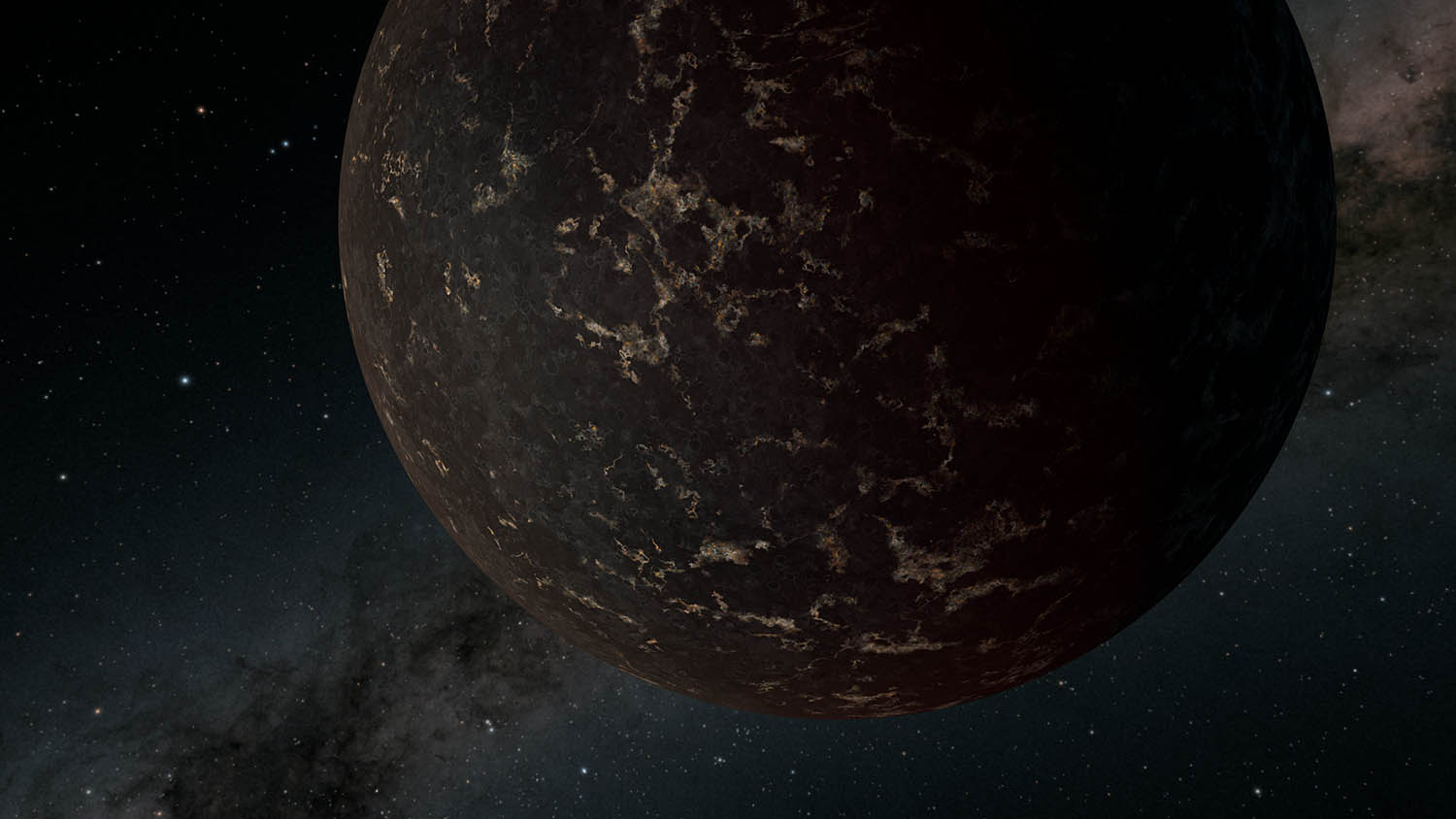NASA | JPL-Caltech | Spitzer | 2019 Aug 19
A new study using data from NASA's Spitzer Space Telescope provides a rare glimpse of conditions on the surface of a rocky planet orbiting a star beyond the Sun. The study, published today in the journal Nature, shows that the planet's surface may resemble those of Earth's Moon or Mercury: The planet likely has little to no atmosphere and could be covered in the same cooled volcanic material found in the dark areas of the Moon's surface, called mare.
- This artist's illustration depicts the exoplanet LHS 3844b, which is 1.3 times the mass of Earth and orbits an M dwarf star. The planet's surface may be covered mostly in dark lava rock, with no apparent atmosphere, according to observations by NASA's Spitzer Space Telescope. (Credit: NASA/JPL-Caltech/R. Hurt (IPAC))
Discovered in 2018 by NASA's Transiting Exoplanet Satellite Survey (TESS) mission, planet LHS 3844b is located 48.6 light-years from Earth and has a radius 1.3 times that of Earth. It orbits a small, cool type of star called an M dwarf — especially noteworthy because, as the most common and long-lived type of star in the Milky Way galaxy, M dwarfs may host a high percentage of the total number of planets in the galaxy.
TESS found the planet via the transit method, which involves detecting when the observed light of a parent star dims because of a planet orbiting between the star and Earth. Detecting light coming directly from a planet's surface — another method — is difficult because the star is so much brighter and drowns out the planet's light.
But during follow-up observations, Spitzer was able to detect light from the surface of LHS 3844b. The planet makes one full revolution around its parent star in just 11 hours. With such a tight orbit, LHS 3844b is most likely "tidally locked," which is when one side of a planet permanently faces the star. The star-facing side, or dayside, is about 1,410 degrees Fahrenheit (770 degrees Celsius). Being extremely hot, the planet radiates a lot of infrared light, and Spitzer is an infrared telescope. The planet's parent star is relatively cool (though still much hotter than the planet), making direct observation of LHS 3844b's dayside possible.
This observation marks the first time Spitzer data have been able to provide information about the atmosphere of a terrestrial world around an M dwarf. ...
A Rare Look at the Surface of a Rocky Exoplanet
Harvard Smithsonian Center for Astrophysics | 2019 Aug 19
Absence of a Thick Atmosphere on the Terrestrial Exoplanet LHS 3844b ~ Laura Kreidberg et al
- Nature 573(7772):87 (05 Sep 2019) DOI: 10.1038/s41586-019-1497-4
- arXiv.org > astro-ph > arXiv:1908.06834 > 19 Aug 2019
viewtopic.php?t=31141#p288754
